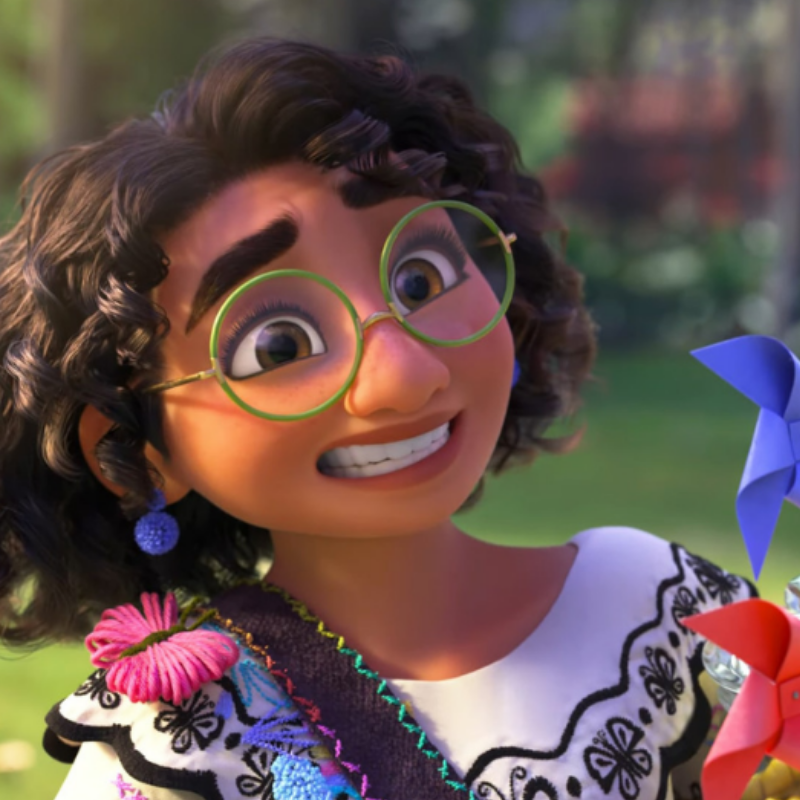I am a complete Disney adult. I know, I know, depending on who you are and how you feel about Disney this may be very telling of who I am as a person. Considering my lifelong love for Disney, it is not surprising that I watched their newest movie, Encanto, as soon as it was available to stream. I have already seen Encanto five times and have plans to watch it in Spanish with my kindergarteners next week. With this in mind, if you have not seen Encanto yet, this review will contain spoilers so you may want this to watch beautiful animated film before reading my thoughts.
My Thoughts
As a white woman who does not have any children, this movie was not necessarily created for my consumption. However, I absolutely adore this new animated movie from Disney for so many reasons. As someone who grew up on Disney movies and magic, I have been so used to seeing Disney focus on magical love and damsels in distress. Do not get me wrong, I love The Little Mermaid so greatly it is almost a personality trait, but Encanto is different. Not different in the way that Frozen showed us how sisters can save each other and they do not need a man to save them, but rather in a way that demonstrates how you can save yourself.
What sets Encanto apart is that Mirabel is searching for her own way to save her family and herself throughout the movie without the assistance of a love interest or an animal sidekick. Likewise, throughout Mirabel’s journey to save her family, she does not actually leave the casita that the Madrigal’s cohabitate which differs from Disney movies like Moana, Coco, or Luca where the main characters leave their home in a grand search of something greater, something to save them. Rather, in Encanto, Mirabel is the one doing her own search in her own home to find herself and for a way to uplift her family.
Additionally, Encanto does not sugarcoat the theme of generational trauma and leans into it as the main driving force for the plot. Typically the Disney movie equation is princess meets boy, villain tries to interfere, boy protects princess, and princess and boy fall in love. That being said, in Encanto there is no “villain,” the driving force is instead the generational trauma that began with Alma and Pedro being forced to leave their home during The War of a Thousand Days (English language sources about the The War of a Thousand Days are more difficult to come by than anticipated, but this wikipedia article can give you a place to start) by armed soldiers. Disney addresses this conflict by killing off the patriarch of the family, leaving Alma (Abuela) to care for her three new children but not without a magical casita to assist. As much as the movie tries to paint Abuela as the “villain” at points when she criticizes Mirabel, viewers cannot forget the trauma that Abuela has endured in her life and why she clings to the miracle that her family was given from her devastating loss. This trauma is passed along from Abuela through her children and onto her grandchildren, specifically through the condemnation of the character of Bruno and his visions that saw the miracle ending. Encanto introduces such a nuanced topic to its viewers in a way that leaves them discussing long after the credits finish and I find this one of the many wonderful parts of this new film.
A Bilingual Treasure
One of the principal reasons of my love for Encanto is because of the inclusion of Spanish language throughout in a natural way. As a Spanish Immersion teacher, I love finding more examples of how English and Spanish are used together as a way to communicate to greater audiences, and Encanto did just that, while also using Spanish to establish the culture of the movie being set in Colombia in a Latinx family. The Madrigal’s use Spanish interchangeably, specifically in their names for one another (Tía, Tío, Primo, Abuela, etc.) and also the colloquial language they use with one another. Likewise, I loved how Disney chose not to add subtitles to the parts of the movie that were in Spanish, such as the conversations between family members and songs throughout the movie. I find the choice to not add subtitles indicates the culture of Spanglish and does not disrupt from the linguistic patterns that is natural for many Latinx families.
While having a song or two in Spanish, Encanto, is also offered as a full film in Spanish and Disney committed themselves to hiring more vocal actors of various languages to dub their movies for viewers of all language backgrounds. I am excited to watch Encanto in Spanish with my students soon and what delights me even more is that the Spanish language cast for Encanto are all Colombian voice actors.
If you have seen Encanto and have thoughts on this magical movie, be sure to let me know what you think in the comments below! I could write about Encanto forever because of how distinct this Disney movie is from the rest.
Learn more about Colombia
One Hundred Years of Solitude by Gabriel Garcia Márquez (get a peice of paper and a pen handy, you’ll need it.)
Stranger to the Moon by Evelio Rosero
Delirium by Laura Restrepo
Colombia a Comedy of Errors by Victoria Kellaway, et. al.


